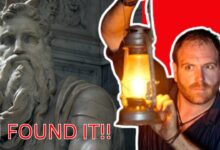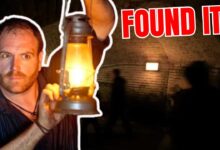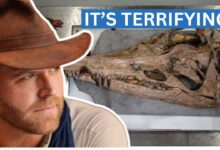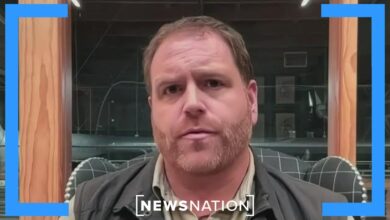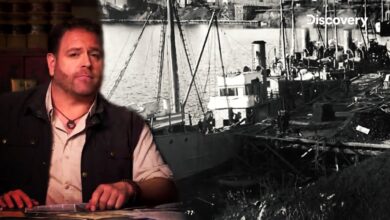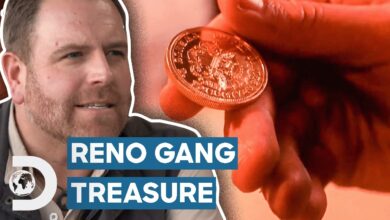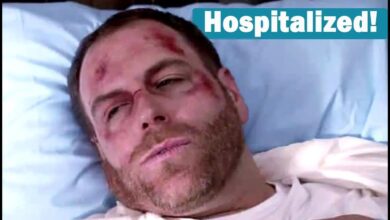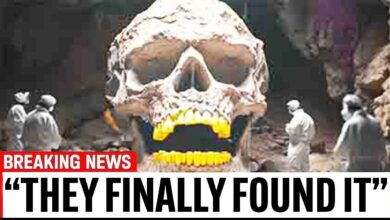Mosaic Inscriptions FOUND in the City of Jesus and His Disciples | Expedition Unknown | Discovery
Mosaic Inscriptions FOUND in the City of Jesus and His Disciples | Expedition Unknown | Discovery

I’m on the shores of the Sea of Galilee,
searching for the lost city of Jesus and his apostles. Bethsaida.
A new find at an archaeological site called El Faraj has stirred speculation that this is Bethsaida’s true location.
Here to greet me is one of the men who made the discovery.
Professor Stephen Notley.
“Hey. How are you?”
“Good, man. Nice to meet you.”
“Nice to meet you.”
“So this site behind you here, I take it you think this is Bethsaida?”
“Yes, absolutely.”
“Why is this maybe Bethsaida?”
“Because as we look at this site, it actually has first-century remains.”
“Right. That indicate a settlement here.”
“We found hundreds of lead weights that go with nets, indicating that there was a substantial fishing industry at this place.”
“Okay. And here we’re right on the water.”
“Yes, the Sea of Galilee is lapping against this site.”
“So we have evidence here of a thriving fishing community in the first century AD in the right time period.”
“Exactly. So that’s a big check mark already.”
“Yes, but that’s not all. We’ve recently made a discovery that is astonishing and connects this place directly to Bethsaida. Would you like to see it?”
“Yeah, I’m dying to see it.”
“Let’s go.”
“This is a large building facing to the east. It means that the apse is on the eastern side.”
“So this… this curved area. This is the end of the church.”
“This is the apse. And two rows of columns supported the large roof, red tiles.”
“And then I’m just now noticing all of this is Mosaic.”
“Yes. Not just a little mosaic either. The intricate tile work stretches across the entire floor from wall to wall.”
“Along with the mosaic floors, I read that you found mosaic inscriptions in the floors.”
“Yes. Yes.”
“How many inscriptions have you found total?”
“We found three inscriptions. Two of them are in the main hall. They are preserved only partially.”
“And right over here we have the third inscription, which is preserved completely.”
“It’s below your feet.”
“Literally below my feet?”
“Completely.”
“Literally? Like under the dirt?”
“Under the dirt.”
“And why is it covered?”
“It’s covered because we wanted to protect it after we discovered it.”
“And this inscription is the one that connects to Bethsaida?”
“Yes. Yes.”
“Is it possible to see what’s down here?”
“Yes. We’ll have to work a little bit.”
“I’m not afraid of work.”
“Put on your gloves and let’s go to work.”
“Oh, manual labor.”
“Didn’t realize this was laid down when?”
“It was laid down at the end of the sixth century.”
“So we are revealing a 1400-year-old inscription.”
“Exactly. This is what we do in archaeology. Millimeter by millimeter, we expose ancient letters from beneath the soil.”
“But making them legible is going to take a little more work.”
“What’s the next step?”
“The next step is washing it.”
“Okay. Please, Steve.”
With the dirt swept away,
All it takes is some water and elbow grease for the past to shine through.
“Wow. Look at that.”
“Oh, it’s just coming to life.”
“That’s unbelievable.”
“I see the scrubber.”
“Sure.”
“If it looks like we shouldn’t be doing this…”
“Don’t worry. The mosaic has lasted 14 centuries in a harsh world. A little spit and polish ain’t going to hurt it.”
“Wow. My brain is exploding right now.”
“It looks like it was written just a few hours ago.”
“It really does. I can’t describe what an honor it is to be able to see this and to reveal it to the world in its entirety for the very first time.”
